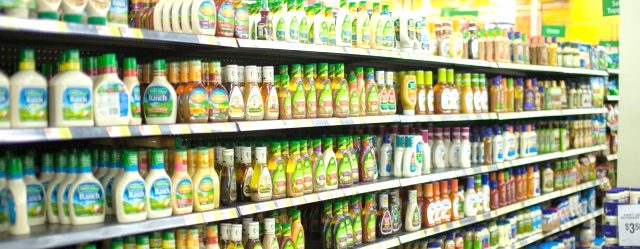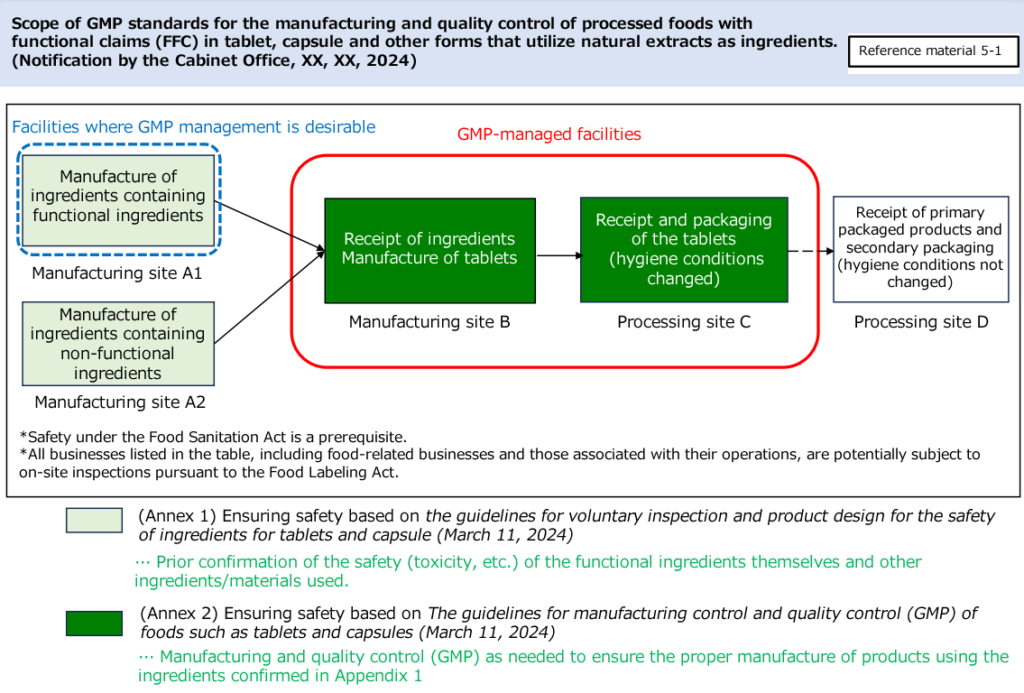
Looking back the year 2024, there have been various amendments to the food labelling system this year, and we would like to reiterate the domestic situation.
Status of amendments in 2024
The main amendment announced this year was the addition of “macadamia nuts” to the list of Voluntary allergen labelling items (and the deletion of “matsutake mushroom”). There is no transitional period for these measures, but there currently is one for “walnuts”, which was added to the mandatory allergen list in March 2023 and will end on 31 March 2025. The addition of cashew nuts to the mandatory allergen list is also under consideration at the moment. This is due to the fact that in the “2024 Report of the Research and Study Project on Food Labelling Related to Food Allergy (Japanese)”, the number of shock cases involving cashew nuts increased significantly, making it the fifth most common causative food.
| March 2023 | “Walnuts” added to the list of mandatory allergen labelling (Japanese) |
|---|---|
| March 2023 | End of the period for transitional measures for revision of ‘non-GM labelling criteria (Japanese)(revised in April 2019) |
| March 2024 | End of the period for transitional measures for “the guideline of additive labeling for use of ‘non-use (Japanese)’” (published in March 2022) |
| March 2024 | Addition of “macadamia nuts” and deletion of “matsutake mushrooms” to the list of the allergens for recommended labeling (Japanese) (no period for transitional measures) |
| March 2025 | Period for transitional measures for mandatory allergen labelling of “walnuts” ends |
| 2025- (under review) | Addition of “cashew nuts” to the list of mandatory allergen labelling |
Other major changes include the transfer of the food sanitation standards administration (e.g. designation of food additives and formulation of standards), previously under the jurisdiction of the Ministry of Health, Labour and Welfare, to the Consumer Affairs Agency (Japanese) from April 2024.
Themes under consideration and future amendments
Several discussions on food labelling systems have been held between last year and this year. “The Sub-Committee for the review of labelling rules for individual products (Japanese)” is studying the labelling rules (labelling items, labelling methods, prohibited labelling items, etc.) for individual products, such as bacon, ham, carbonated drinks and fruit drinks, with the aim of making the rules more comprehensive. The public comments on these draft amendments are expected to take place by March 2025. In addition to reviewing the setting of expiry date labels, “The review discussion on guidelines for setting food expiry date labels” (Japanese) is also considering the ‘handling of food that has reached its expiry date and can still be eaten’. The draft amendments are also expected to be published by March 2025.
In addition, “The discussion on Front-of-package Nutrition Labelling in Japan” (Japanese) is considering the direction of voluntary labelling with reference to front-of-package nutrition labelling systems in other countries. “The Sub-Committee to Study the Use of Digital Tools for Food Labelling” (Japanese) is also scheduled to study specific methods of utilizing digital tools with reference to initiatives in other countries. In January 2023, “The 3rd Food Labelling Advisory Committee (Japanese)” also discussed “the labelling of additives used for nutritional fortification purposes (Japanese)”.. It is expected that a draft amendment will be drawn up after conducting a fact-finding survey. (Japanese)
The above is a brief summary of the upcoming amendments to the food labelling system, which are likely to have a significant impact in practice, particularly with regard to “cashew nuts”, “labelling rules for individual items” and “labelling of additives used for nutritional fortification purposes”. We hope that you will take the opportunity to review each of the amendments once again.
Additional information: 19 December 2024
The 2024 Food Labelling Advisory Committee (held on 13 December) (Japanese) presented a proposal to revise the standard values for nutrient labelling (the standard values for nutritional claims are also scheduled to be revised), and public comments will be invited in the future.
Share/Like/Follow:
Newsletter Signup
We issue monthly e-newsletters, which provide you with the latest updates on food labeling/regulations in Japan.
If you want to make sure to not miss any issue, please click below.
Related Service
Research Services on Ingredients & Food Labeling -For the Japanese Market-
We verify the conformity of ingredients and additives with the standards for use in Japan based on specifications such as formulation lists. We also verify the conformity of the proposed labeling of ingredient names, nutrients, etc. with the labeling standards based on specifications such as formulation lists.

Label bank Co., Ltd. CEO (Founder)
Born in Japan. Working on solving various issues related to food labeling operations. Also regularly gives lectures for various organizations in Japan.
Co-author of ‘Latest edition: Guide book Food Labeling Law and related business practical points – from scratch (Japanese version only)’ (DAI-ICHI HOKI CO., LTD/2019).











